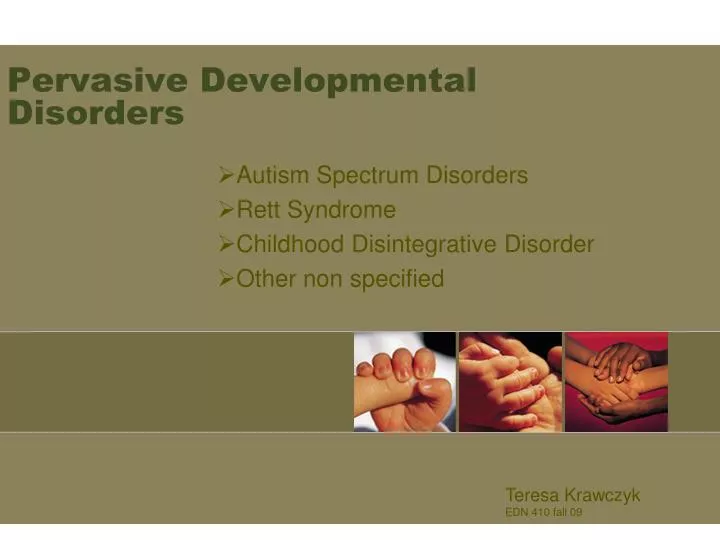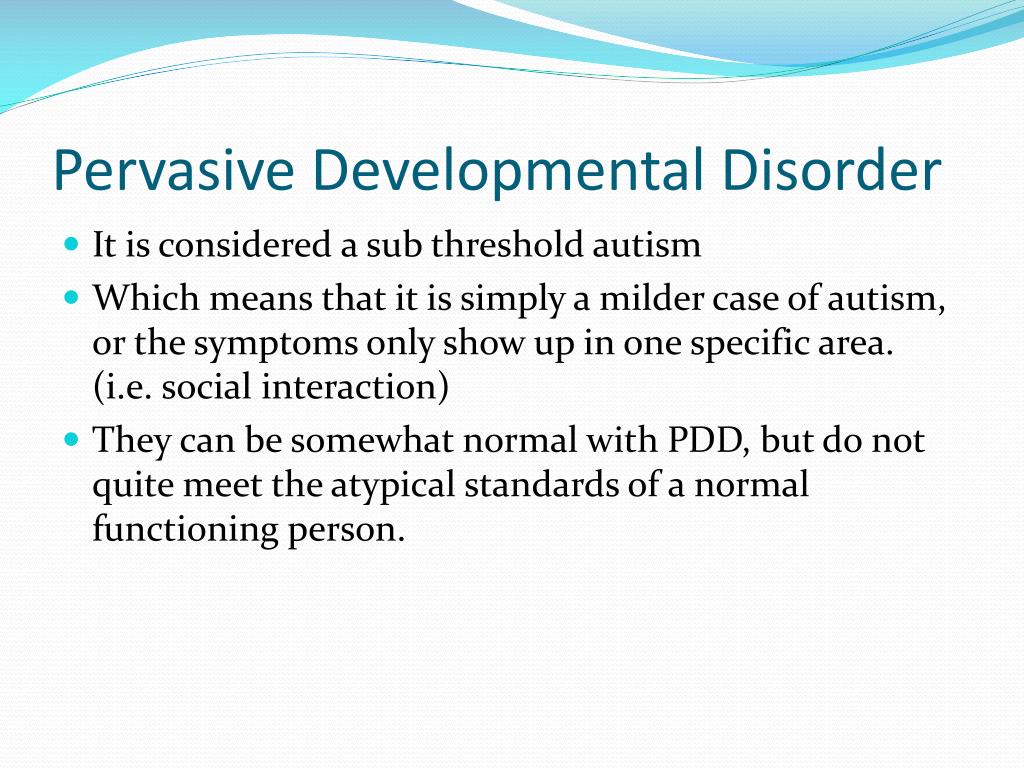

/452425067-56a053dc3df78cafdaa10c71.jpg)
įunctional neuroimaging studies have repeatedly suggested that the function of the prefrontal cortex (PFC), critical for working memory and executive functioning, is disturbed in persons with PDD. The difficulties with social reciprocity, communication, and restricted behaviors and interests that occur with PDD suggest that the syndrome affects a functionally diverse and widely distributed set of neural systems. Pervasive developmental disorder (PDD) is defined on the basis of a selected set of behavioral disturbances that more or less map onto specific functional systems of the brain. The present results may be also potentially useful for applying NIRS to clinical settings of child psychiatry. The present findings are consistent with proposed prefrontal dysfunction in PDD subjects identified by other neuroimaging modalities. Moreover, reduced oxy-hemoglobin concentration change for the right PFC was significantly correlated with verbal communication deficits within the PDD group. The statistical results did not change when only IQ-matched high-functioning subjects ( N = 7) were included. While the number of words generated during the letter fluency task did not differ significantly between groups, the analysis of covariance including IQ as a confounding covariate showed that the PDD group was associated with bilateral reduction in oxy-hemoglobin concentration change as compared with the control group. Hemoglobin concentration changes were measured with a 24-channel NIRS machine during the letter fluency task.

The subjects were 10 adults with PDD and 10 age- and gender-matched healthy subjects. The aim of our study was to conduct an NIRS cognitive activation study to verify PFC dysfunction in PDD. Although NIRS enables the noninvasive clarification of brain functions in many psychiatric disorders, it has not yet been used to examine subjects with PDD. Recently, the development of near-infrared spectroscopy (NIRS) has enabled noninvasive bedside measurement of regional cerebral blood volume. Functional neuroimaging studies have suggested that dysfunction of prefrontal cortex (PFC) is present in persons with pervasive developmental disorders (PDD).


 0 kommentar(er)
0 kommentar(er)
